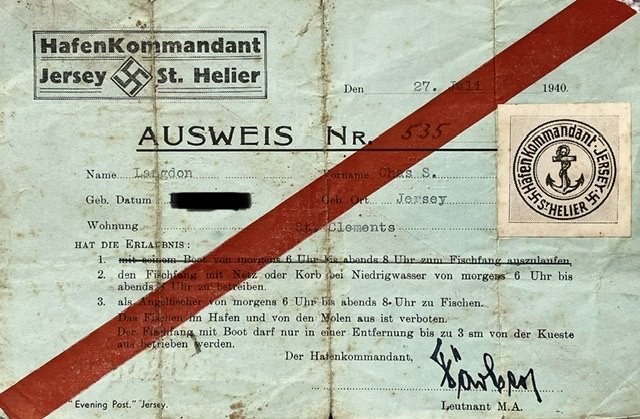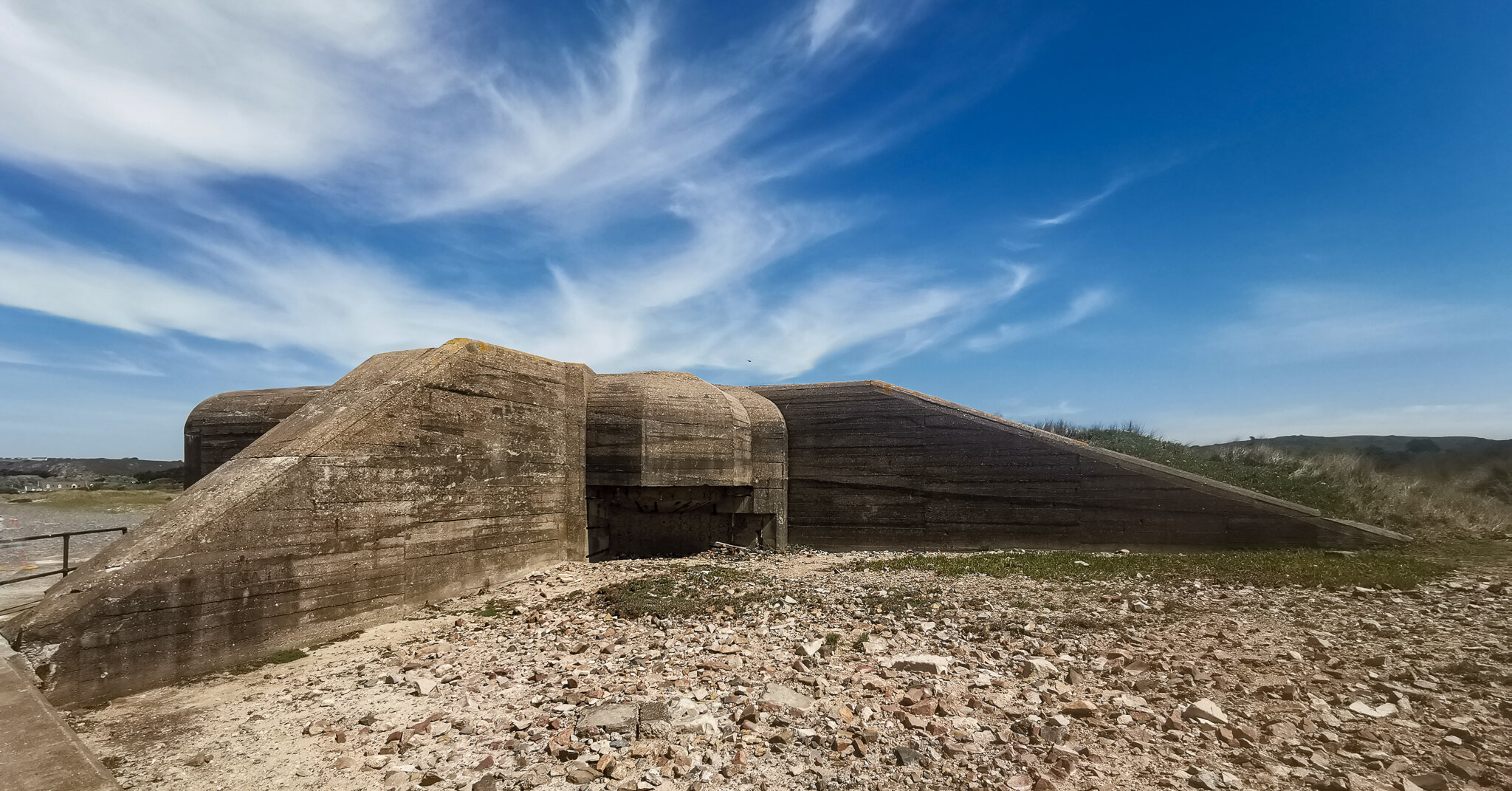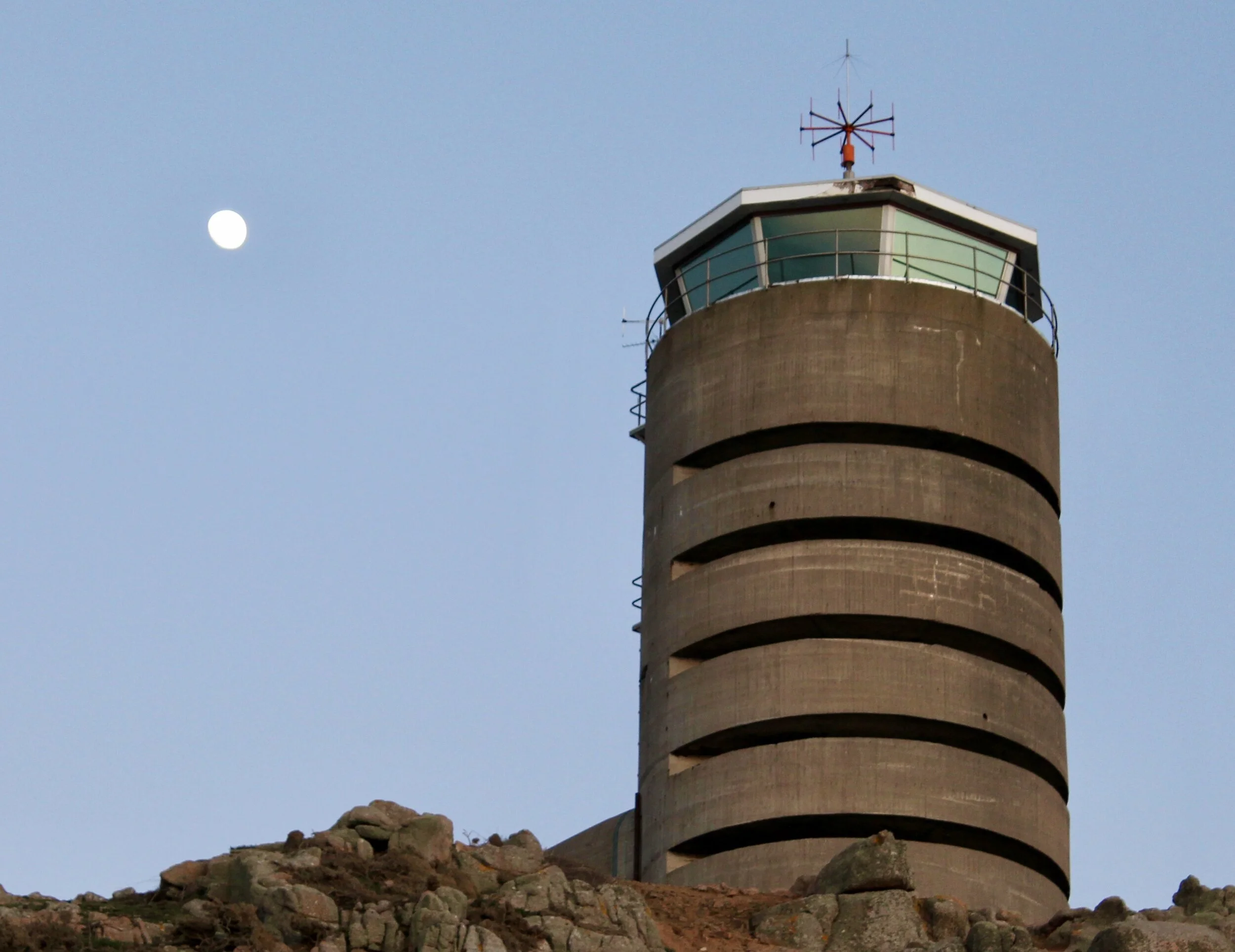“And our dear Channel Islands are also to be freed today”
When Winston Churchill uttered those words at 3pm on 8th May 1945 hundreds of Islanders, gathered in the Royal Square and cheered with relief and joy.
The following day, 9th May, Jersey was liberated and almost eighty years later, we still celebrate our national day with pride and gratitude.
The Liberation statue in Liberation Square
A Brief History
The Occupation of the Channel Islands is well documented, but there are many who don’t know about it. The islands were the only part of the British Isles to be invaded by Nazi German forces and it should never have happened.
The British Government decided that the islands would not be defended as they were of no strategic value, and on 15 June 1940, ordered them to be demilitarised.
On 19 June, the people of Jersey were told they could evacuate if they wished. They had an extremely difficult decision to make: send their children to England on their own; go with them leaving loved ones and friends and almost everything they owned behind; or be faced with German occupation.
It’s reported that, over the coming days, approximately 25,000 Islanders queued outside the Town Hall and registered to leave, although many changed their minds. Over the next seven days, boats full of evacuees, carrying only their allowed 25 lbs of possessions, left St. Helier harbour. In the end, approximately 7,000 Islanders left, many of them children who wouldn’t see their parents for the next 5 years.
Those who left secured their houses in the hope that they would return soon, but had to leave their pets and cars behind. The stray animals were rounded up and put down, and many empty houses were broken into and robbed. Many never returned to Jersey and, sadly, the ones that did return were shunned by some Islanders, who said they had ‘run away’.
St Helier Town Hall where 25,000 Islanders registered to leave
Germany Invades
On 28th June, 1940, the German Luftwaffe bombed several island sites, including the harbour, killing 10 people. This made any further evacuations impossible.
On 1st July, they demanded the island surrender and, as Jersey was unable to defend itself, the States (our Government) had no choice other than to raise the white flag.
Over the next 5 years, life changed dramatically. The island lifestyle known before the Occupation was replaced by fear, starvation and many acts of bravery.
All residents had to register with the German Forces and were given registration documents that they had to carry with them.
This is my Poppa’s (grandad) German Occupation registration document dated 27 July 1940
My dad regales many a story about those years and what our family and others went through. Reminiscing he says, “I’d never again like to experience the hardship we had to endure. My parents had to be so careful about what they said or did under the German rules.”
He continues, “I remember when we lived at our bungalow in Maupertuis Lane [St. Clement] and my father would go low water fishing from La Mare slip. He would catch a lobster or crab, sometimes a nice conger to make a delicious conger soup with marigold and powdered milk, if we were lucky enough to have some. The Germans had built their huts on what is now a car park, and as Dad worked his way down the beach to his favourite rocks, he heard bullets pinging off the rocks nearby. I don't think [the soldiers] were out to kill him, just using him for target practice. He definitely had a sweat on when he got back home!”
Islanders were unaware of what was going on in England, as radios were banned and those caught with one risked being sent to the concentration camps. However, many people made crystal radio sets, my grandad included. When it broke, he risked taking it to someone’s house who repaired them. As he was a fisherman, he hid it in his bicycle basket with a fresh catch of live lobsters hoping that any German soldier stopping him wouldn’t be brave enough to put his hand in. Thankfully, it all went well. He often hid fresh butter and milk, given as payment for fish, in the basket too.
It’s a sad fact that fear, or false promises, led some people to turn on their family, friends and neighbours, informing the Germans about them. Women who fraternised with German soldiers were called ‘Jerry Bags’.
Around 1200 people were deported to various camps in Germany. Twenty-two Islanders are known to have died in the concentration camps, for reasons such as possession of a wireless, receiving stolen goods or helping slave workers. The only British survivor of the Bergen-Belsen camp was a Jerseyman, Harold Osmond Le Druillenec. He had been informed upon for helping his sister Louisa Gould who had sheltered a Russian slave worker for 18 months. She was one of the twenty-two who died.
Food rationing was strict and many people really struggled. Thankfully, my grandparents had always kept a few small livestock, and Dad remembers that food wasn’t too much of a problem, although he was very young and I suspect that my grandparents made sure he had enough to eat before they did.
Prisoners of War
Many thousands of POWs were brought to Jersey and forced to build coastal fortifications, reservoir walls, piers and an underground hospital. They came from Russia, Spain, France, Poland, and Algeria and were treated appallingly. Many of them starved to death and were buried in the walls they were building. Horrific!
Islanders risked their own lives to help these poor people and there are engraved flagstones in St Helier commemorating their time here:
‘I shall never forget the kindness shown to me and the other slave workers by the people of Jersey.’ John Daimau - Spanish slave worker
‘The desire for food was much stronger than the fear of death.’ Georgi Kondakov - Russian slave worker
‘But the worst thing was the hunger. I was always hungry, I felt as if I could eat non-stop. I was starving night and day.’ David Trat - French slave worker
‘There was no discussion about whether to help the escaped labourers or not. They just couldn’t help themselves.’
Stella Perkins - Recognised by Russia for assisting slave workers
German Fortifications
Most of the structures the slave workers built still exist today. There are hundreds of them dotted around the island - bunkers, gun turrets, sea walls - all reminding us of that terrible time.
Radio Tower is located at Noirmont and has been turned into visitor accommodation
Many of the bunkers are maintained and open days allow visitors to take a look inside and look through the gun turrets.
Some have been turned into museums, the Jersey War Tunnels being the best. It is an excellent way to learn more about this period and is very moving (take a coat as it’s cold and damp inside, even in summer). Others have been turned into cafes, such as the ‘Gunsite Beach Cafe’ and viviers (where live shellfish is stored and sold).
1944/1945
Towards the end of the war, things changed for the worse.
During the winter of 1944/45, supplies from German-occupied Europe were cut off, as Allied forces were advancing from the Normandy beaches. My grandparents’ chickens and rabbits were stolen one night, probably by German soldiers, who were also starving.
The sight of the International Red Cross ship, the SS Vega, arriving at St Helier harbour on 30 December 1944 was cause for celebration. It brought desperately needed food and medical supplies and returned four more times before the liberation in May.
Liberation
On 9 May 1945, there were huge celebrations, when the first British troops (aka Tommies) landed on Jersey soil.
Hundreds of people went to the harbour to welcome the soldiers. A huge crowd gathered in front of the Pomme D’Or Hotel, where the British flag was raised for the first time in 5 years. It’s still the focal point of every Liberation Day celebration, with a re-enactment of the flag being hoisted by ‘soldiers’ on the balcony.
And this is why we still celebrate our freedom.
What’s strange, is that the COVID-19 pandemic lockdowns, gave us all a tiny glimpse of what it was like to have our freedom taken away. Like Islanders in 1940, our life took a rapid and unexpected turn. Our freedom was restricted and we were forced to keep away from loved ones. Thankfully, our lives were not affected in anywhere near the same way.
There are reminders of our liberation all over the island from the name of our bus station (Liberation Station) and the nearby shopping arcade (Liberty Wharf) and the statue unveiled on the 50th anniversary in Liberation Square.
Many houses, pubs and parish halls are decorated with flags - everywhere you go there’s a splash of red, white and blue.
We value our freedom and even though many from that era have now passed, we will never forget, or let be forgotten, the hardships and sacrifices made by our families during those years.
If you want to find out more here are couple of websites:
Channel Islands Occupation Society
Jersey Heritage
This post was first published on 10 May 2020 and has been edited.










